|
|
Post by bixaorellana on Sept 7, 2015 5:36:22 GMT
|
|
|
|
Post by bixaorellana on Sept 7, 2015 6:02:29 GMT
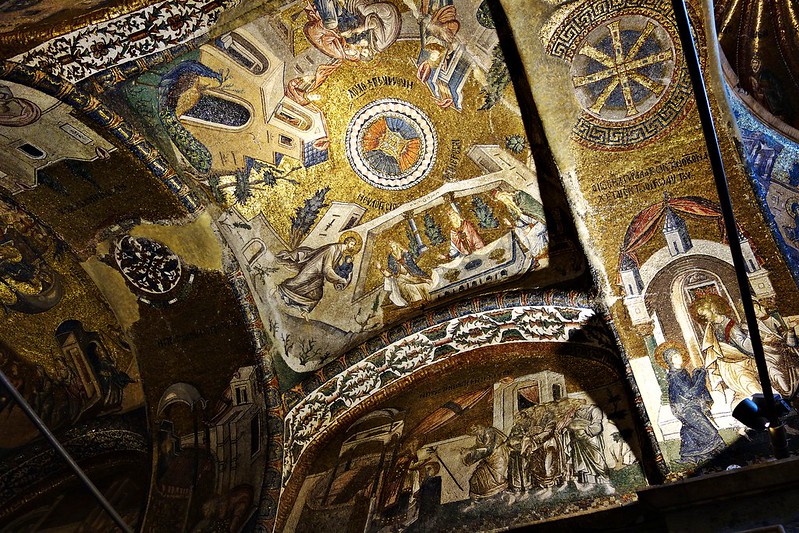 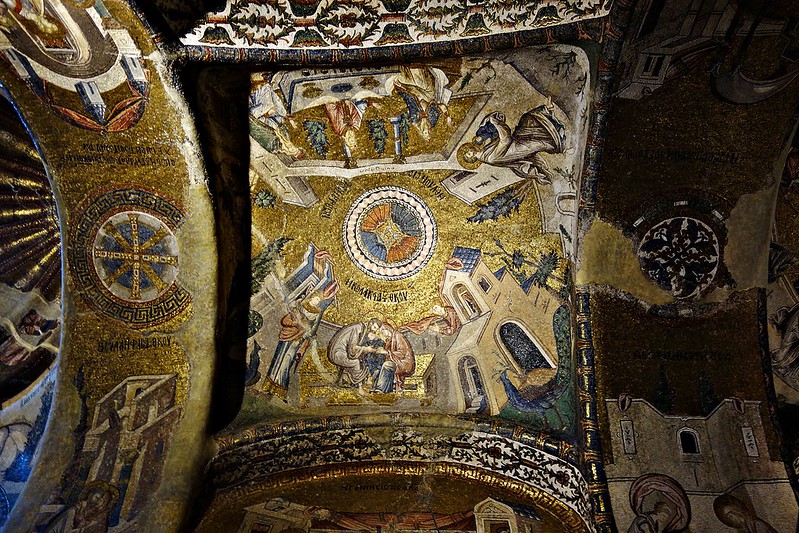 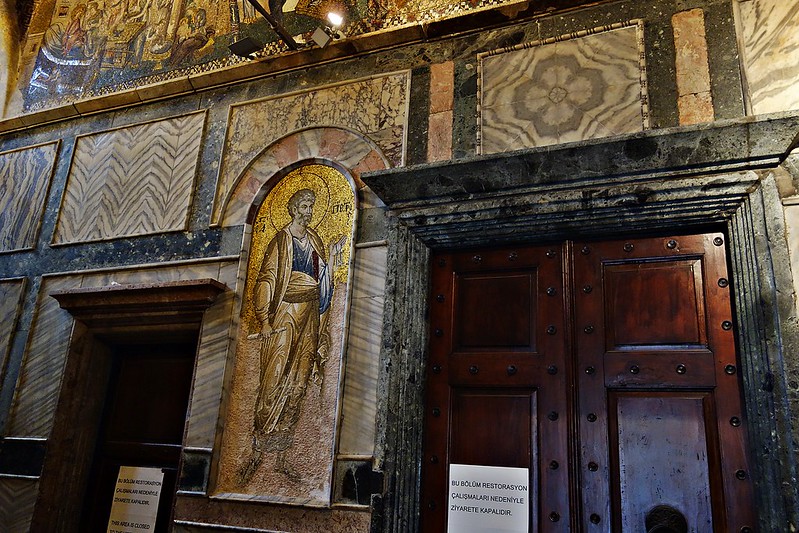 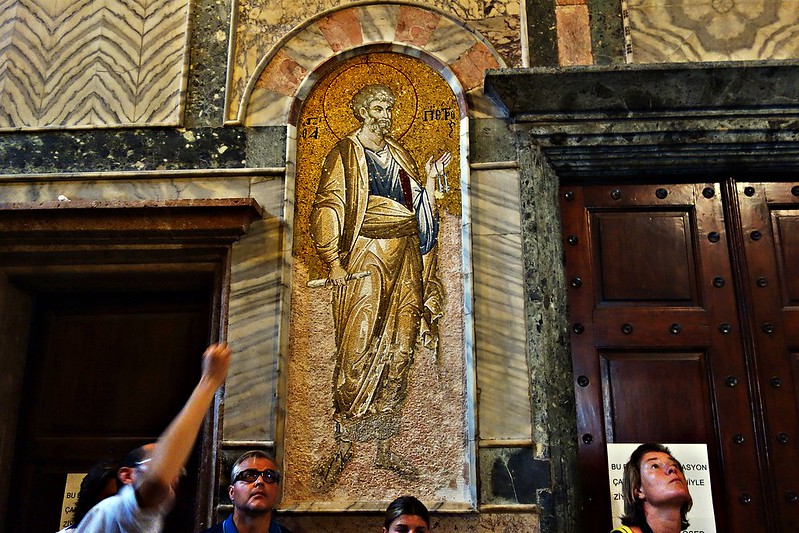 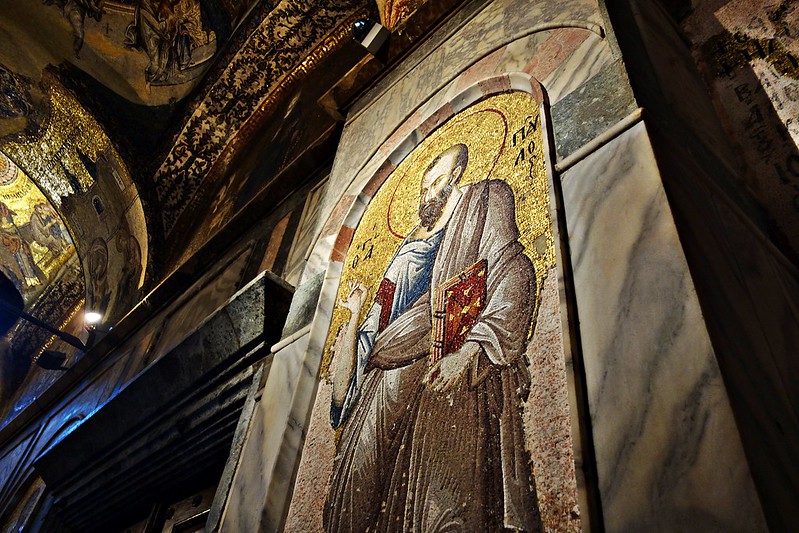 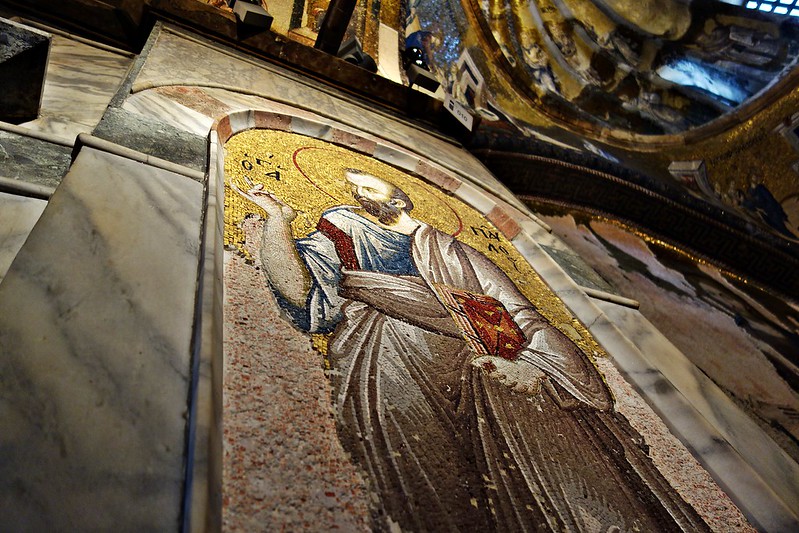 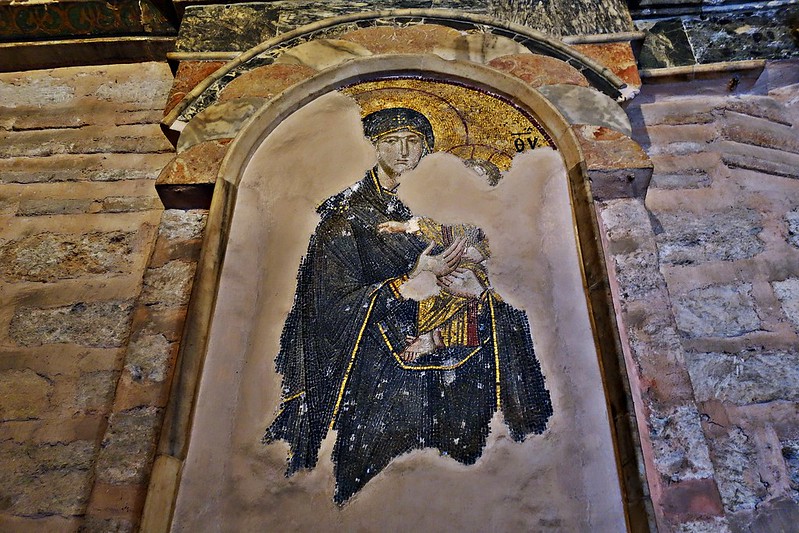 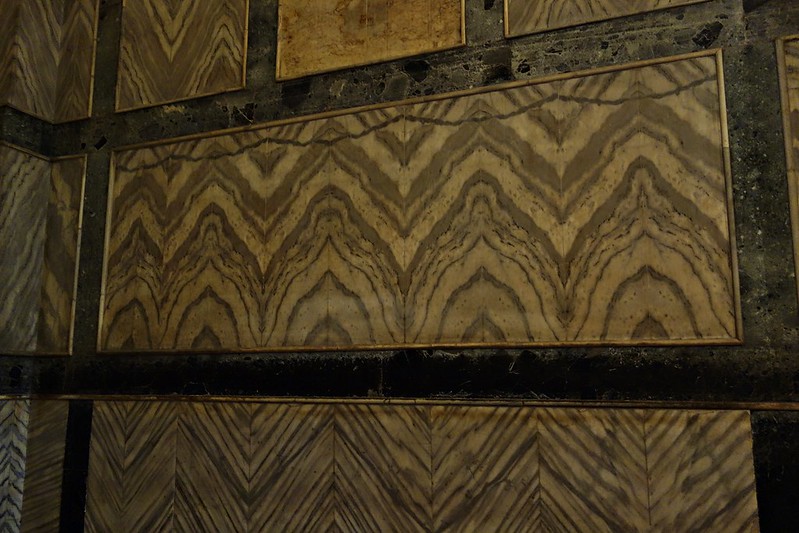 This dome depicts Christ surrounded by his ancestors ~ This dome depicts Christ surrounded by his ancestors ~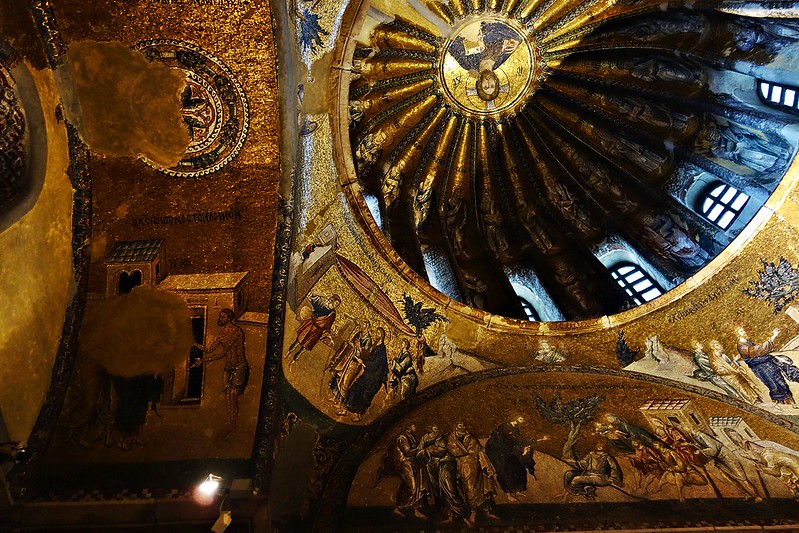 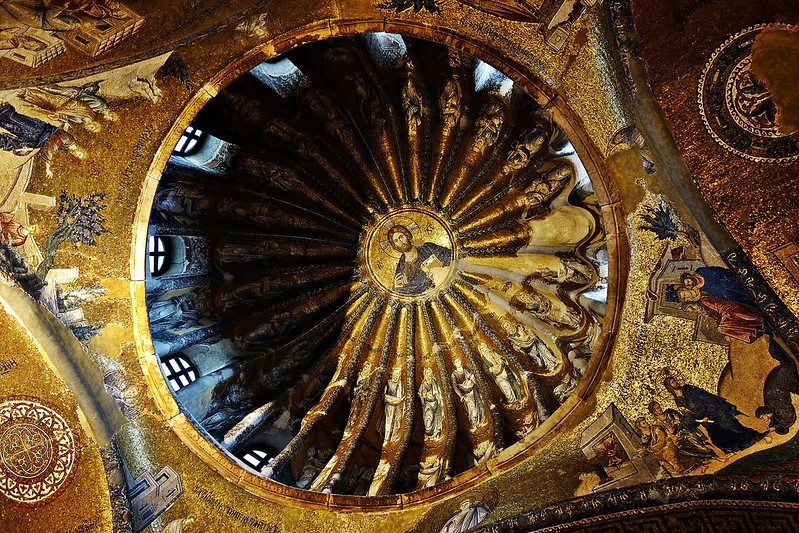 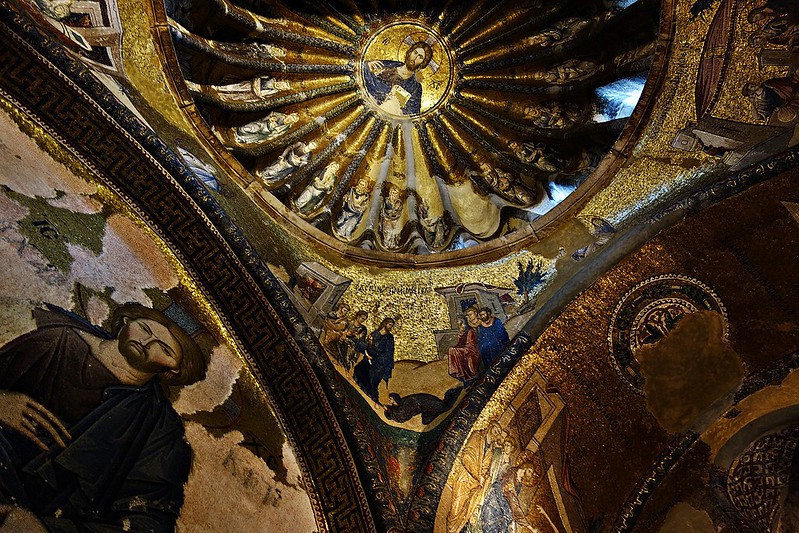 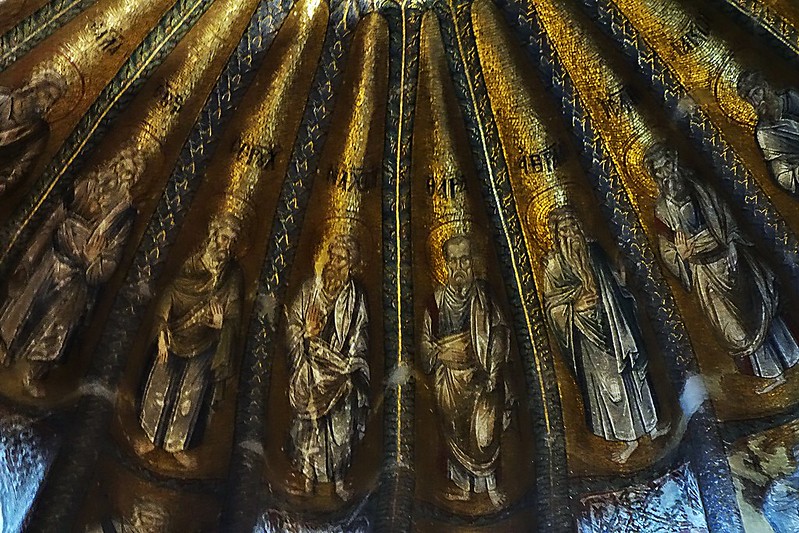 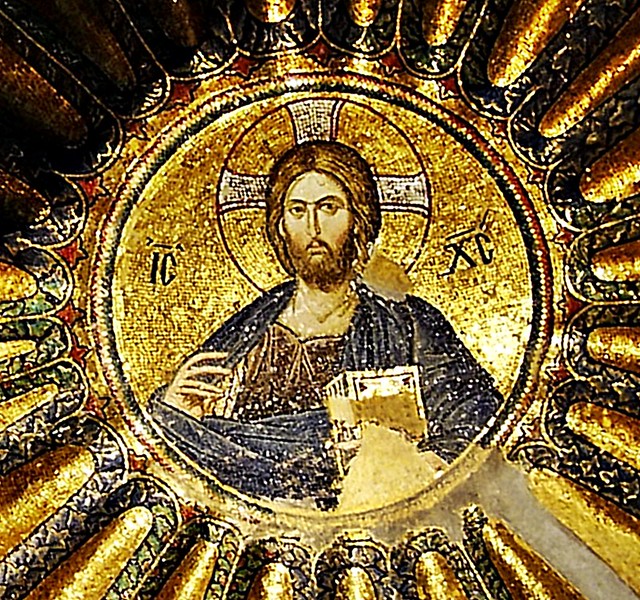 ~ Stay tuned for more to be added later ~ ~ Stay tuned for more to be added later ~ |
|
|
|
Post by bjd on Sept 7, 2015 6:09:53 GMT
More outstanding mosaics. I absolutely love that stuff -- much prefer it to Renaissance or Baroque in churches.
|
|
|
|
Post by htmb on Sept 7, 2015 13:50:19 GMT
It's always nice when things turn out better than had been anticipated!
|
|
|
|
Post by bixaorellana on Sept 7, 2015 15:37:05 GMT
Thank you so much, Bjd -- I absolutely agree with you!
It is, Htmb, it is. In this case I was pretty sure I was going to be happy with the visit. But it was really gratifying that my friend, who I suspect was somewhat humoring me by going, was also blown away.
|
|
|
|
Post by tod2 on Sept 7, 2015 16:33:40 GMT
Absolutely amazing Bixa! How wonderful for you to be able to see it and be very impressed.
I can see how religions overlap in past centuries( and present actually), when I compare the frescos and beautiful mosaics with the ones I saw in the church of Saint Serge in Paris.
|
|
|
|
Post by bixaorellana on Sept 7, 2015 17:24:57 GMT
|
|
|
|
Post by bixaorellana on Sept 7, 2015 17:59:29 GMT
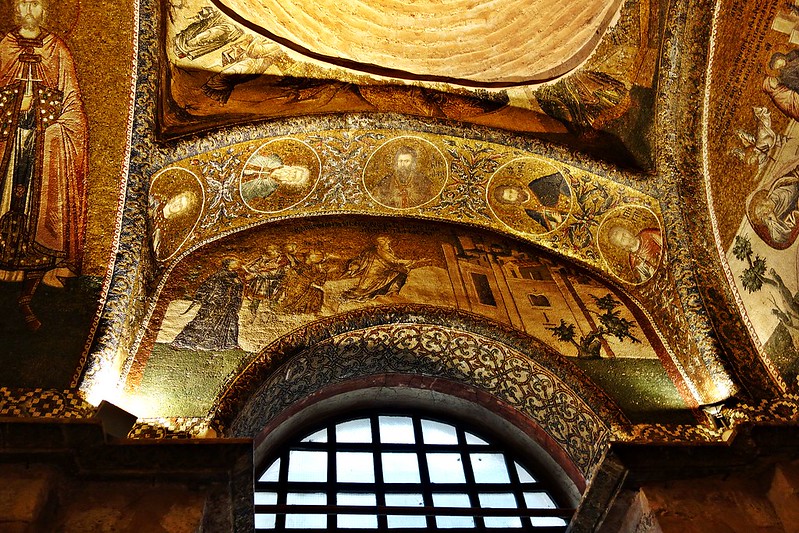 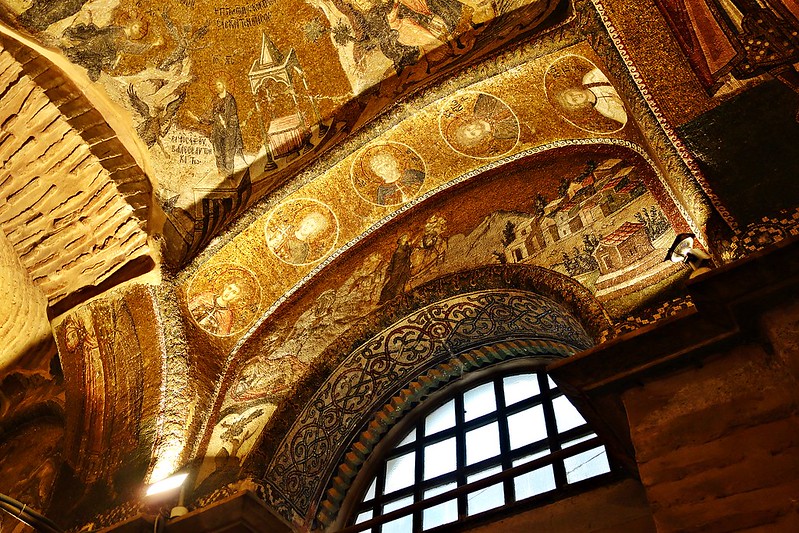  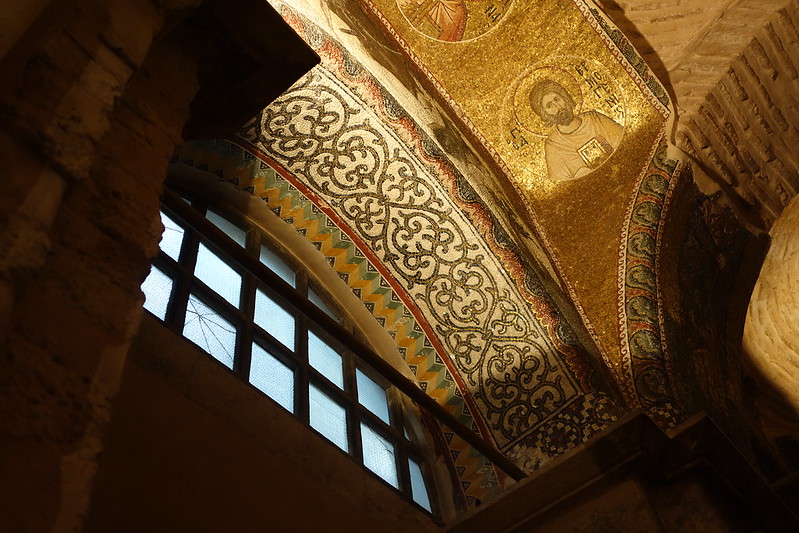 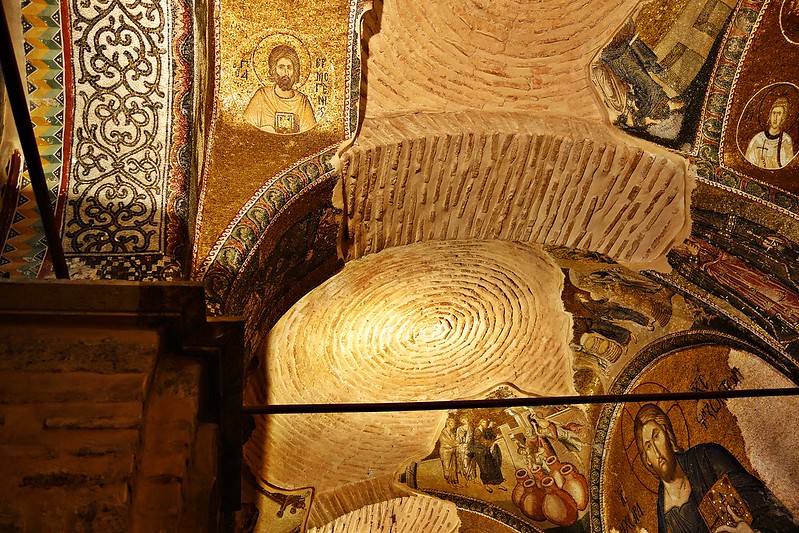  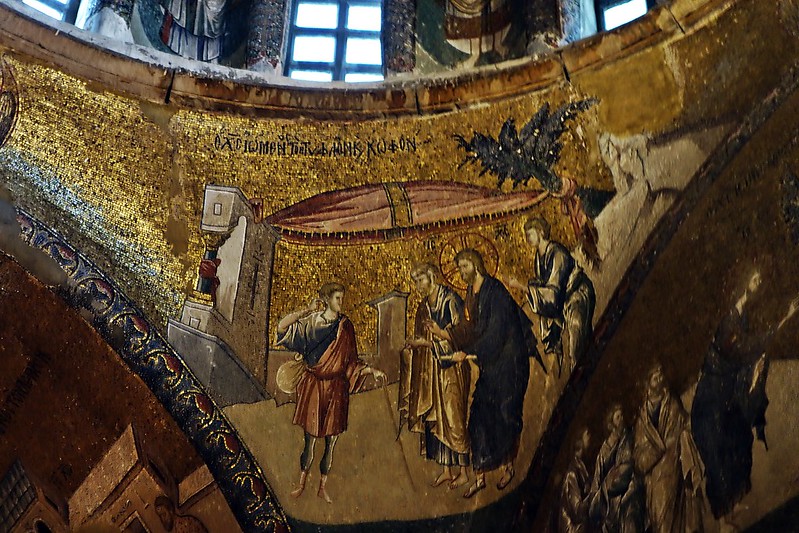 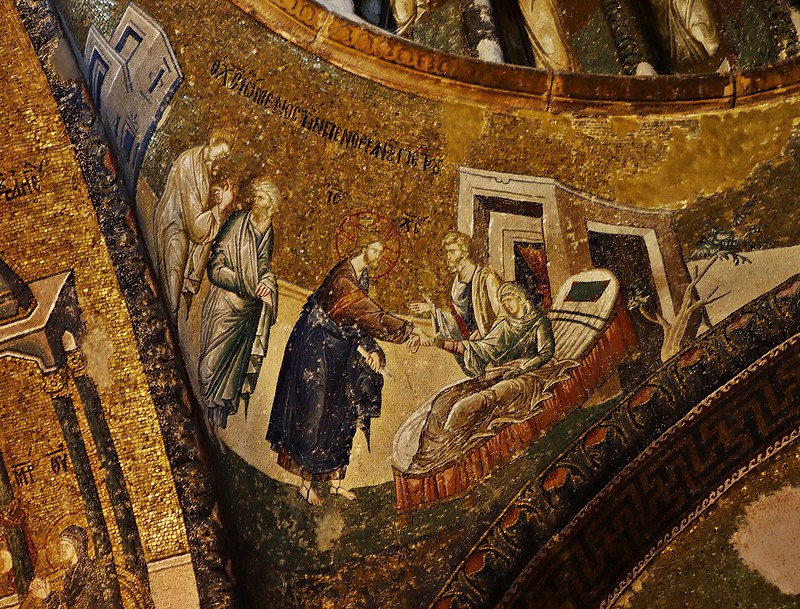 Trying to see into the closed part where renovation is taking place ~ Trying to see into the closed part where renovation is taking place ~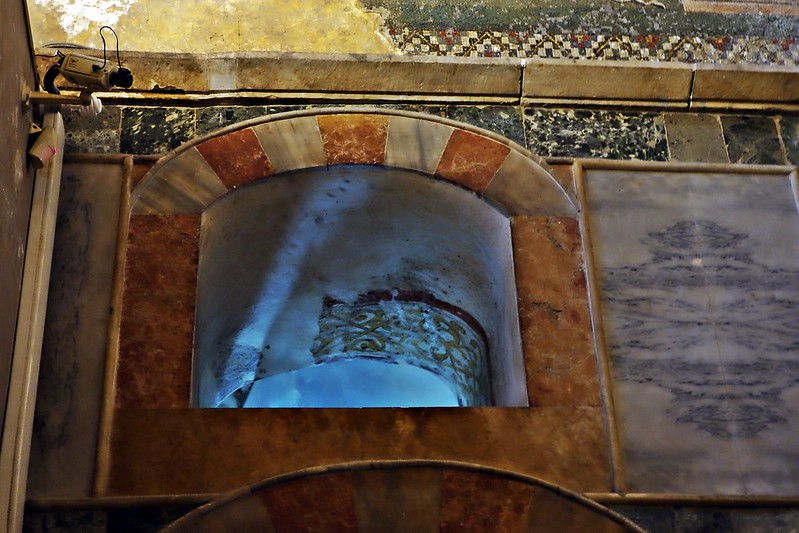 I was intrigued by these capitals with the missing faces. The first impulse was to think they may been destroyed because of aniconism at the time the church was converted into a mosque. But since some of the capitals retained their faces, my friend suggested that it might have been theft. I was intrigued by these capitals with the missing faces. The first impulse was to think they may been destroyed because of aniconism at the time the church was converted into a mosque. But since some of the capitals retained their faces, my friend suggested that it might have been theft.
She pointed out that the face portions could have been knocked off to be sold as antiquities. 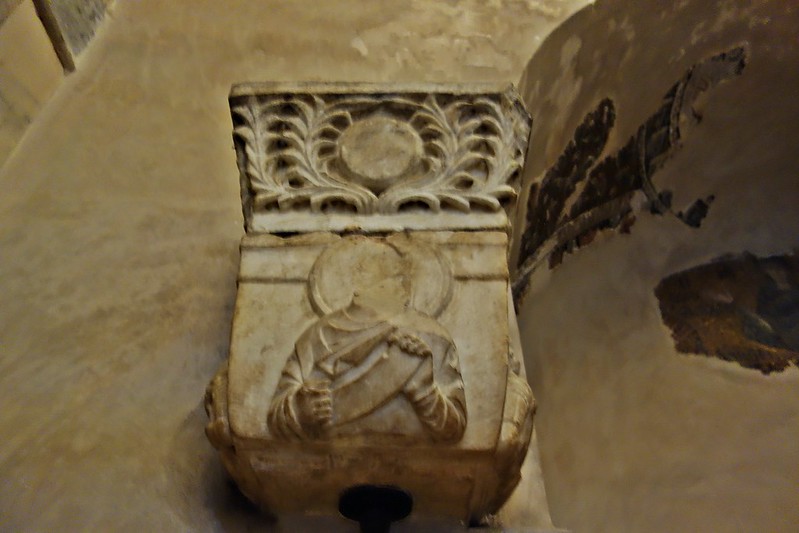 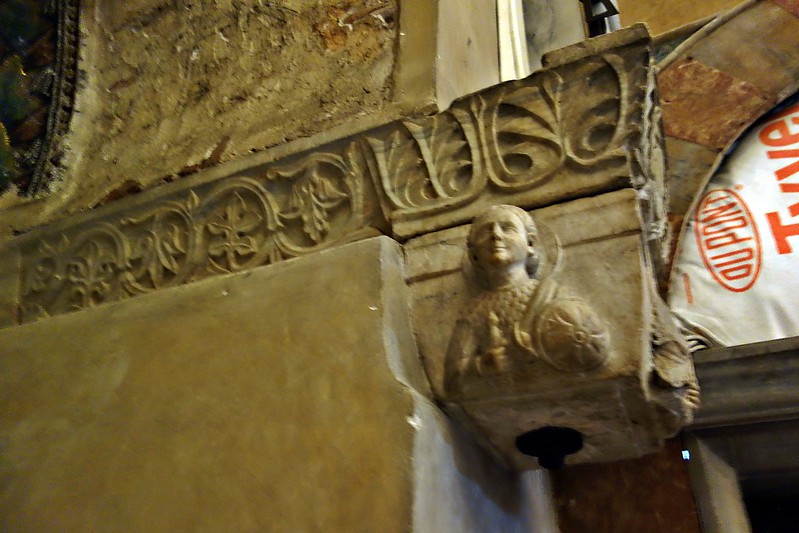 |
|
|
|
Post by Deleted on Sept 7, 2015 20:57:23 GMT
I am so glad you got to go to this magnificent church.
It was hands down the highlight of my trip there.
Although the Blue Mosque, The Hagia Sofia were magnificent in their own rite, Chora blew me away.
I went alone and there were very few people there.
(This was the destination that I describe in my harrowing taxi ride that I posted about in Taxi Tales).
It's a bit out of the way, but well worth the trip.
I did not come across it in any of the guides that I read and this was before I had a computer.
I learned of it from a waiter where I had my early a.m. coffee.
Again, I am so glad you went.
I was hoping that you would.
You did your homework well.
|
|
|
|
Post by htmb on Sept 7, 2015 21:29:57 GMT
The mosaics look to be absolutely stunning.
I would imagine the restoration will continue to be on-going for a long, long time.
|
|
|
|
Post by fumobici on Sept 7, 2015 22:28:47 GMT
This is a stunning report, I'm trying to imagine what it feels like being in that ancient place. And yes, I imagine the restoration will be ongoing for many years yet. I hope money is somehow being budgeted for the work to continue to completion.
|
|
|
|
Post by bixaorellana on Sept 7, 2015 22:33:42 GMT
Casimira, I didn't really know much about Chora except that it had mosaics and that it was medieval. Since I like anything medieval and in Sicily had acquired a passion for mosaic*, I knew I had to go. The longish but interesting bus ride followed a walk downhill through the funkily pleasant neighborhood to the church enhanced the experience. Htmb, you'd think it would be an overly daunting task, but I guess each bit uncovered and cleaned must spur them on. Anyway, I hope everyone will check back, as I haven't shown the wonderful frescoes yet. * anyportinastorm.proboards.com/thread/7477/la-martorana-palermo and anyportinastorm.proboards.com/thread/7484/cappella-palatina-palermo |
|
|
|
Post by bixaorellana on Sept 7, 2015 22:47:24 GMT
Thank you so much, Fumobici. Didn't mean to ignore your post, but got a phone call in the middle of writing my last answer. Good point about the funding. I looked online, but can't find who is paying for the current restoration. However, I did find this dedicated site which addresses the history of the renovations, plus gives excellent practical advice for aspiring visitors: www.choramuseum.com/ |
|
|
|
Post by questa on Sept 7, 2015 22:57:52 GMT
Over in Compass Points/Europe/Turkey there are some lovely pics that anshjain has posted and some that I took in 1995 of the Chora Church. Mine are from when restoration was not a high priority but I am delighted to see so much more work has been done now.
You can compare 'before' and 'after' pics with some of the art works. I could not take many photos as a lot of the works were damaged to the point of "what is it?"
Bixa, if you want to move my Istanbul 1995 thread to here for comparisons, you have my blessings.
|
|
|
|
Post by bixaorellana on Sept 7, 2015 23:15:49 GMT
Questa, your thread is most interesting and deserves to stand alone. I'm sure people will want to check it out in the Turkey sub-board of Europe, along with Ansh's great coverage of places in Turkey.
|
|
|
|
Post by bixaorellana on Sept 8, 2015 0:17:37 GMT
Following up the comments about funding and restoration with some looks at parts that are missing and the tantalizing remains ~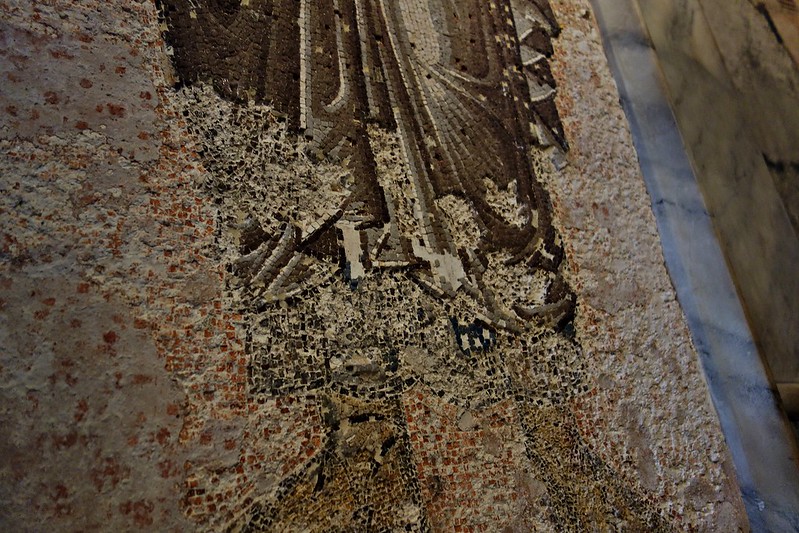 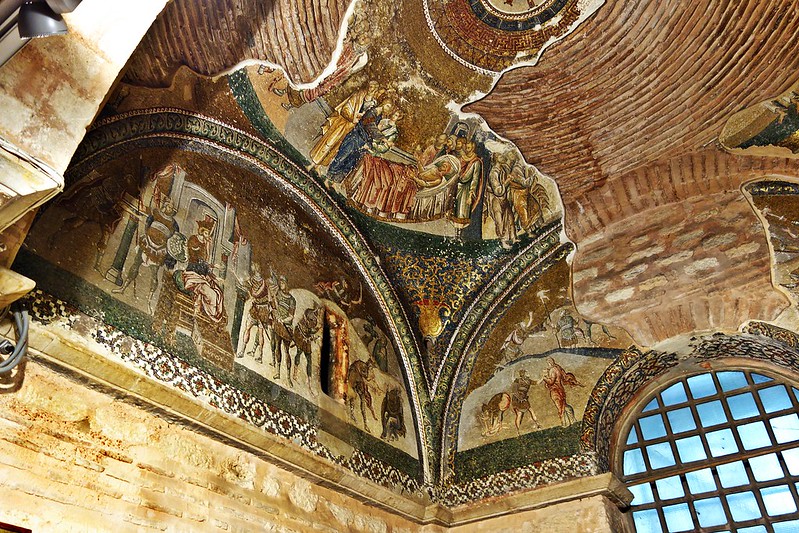 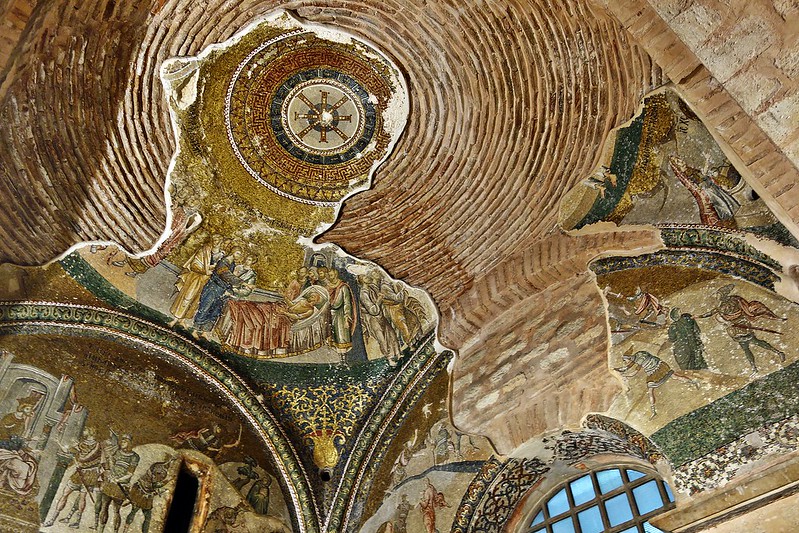 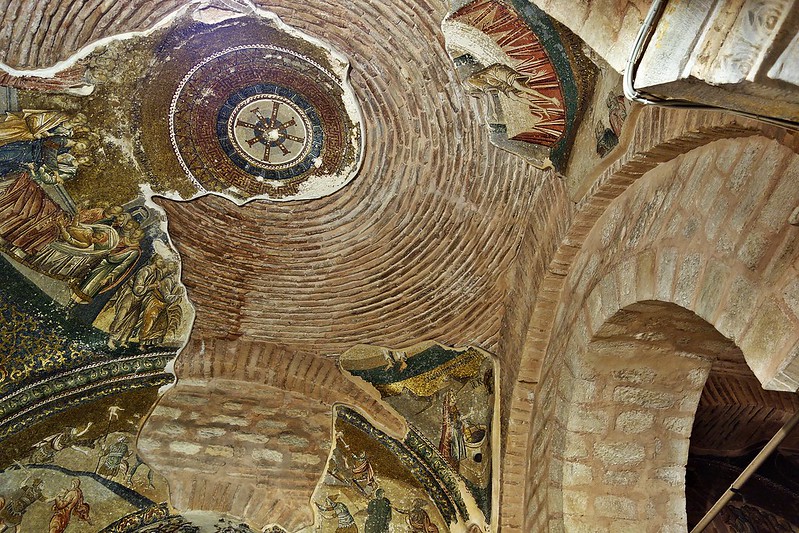 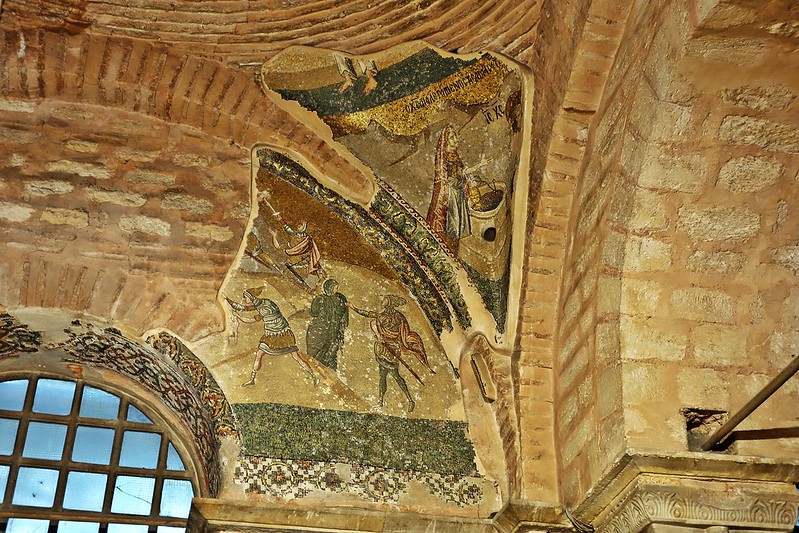 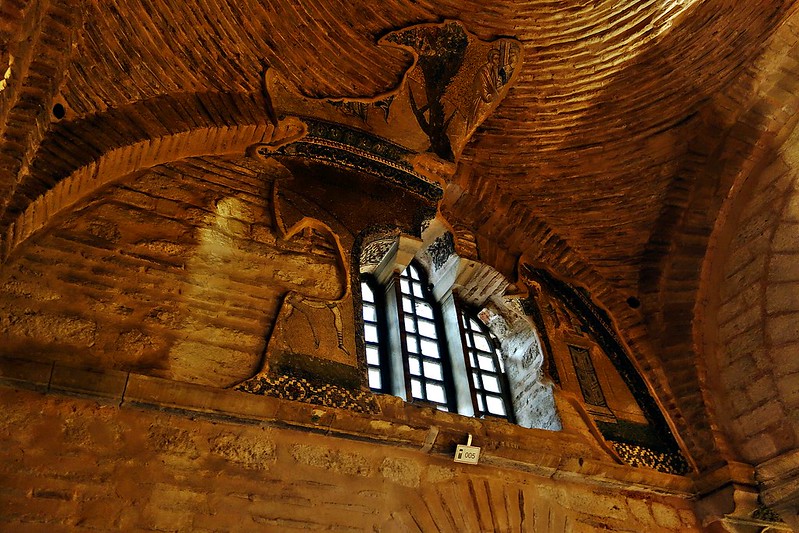 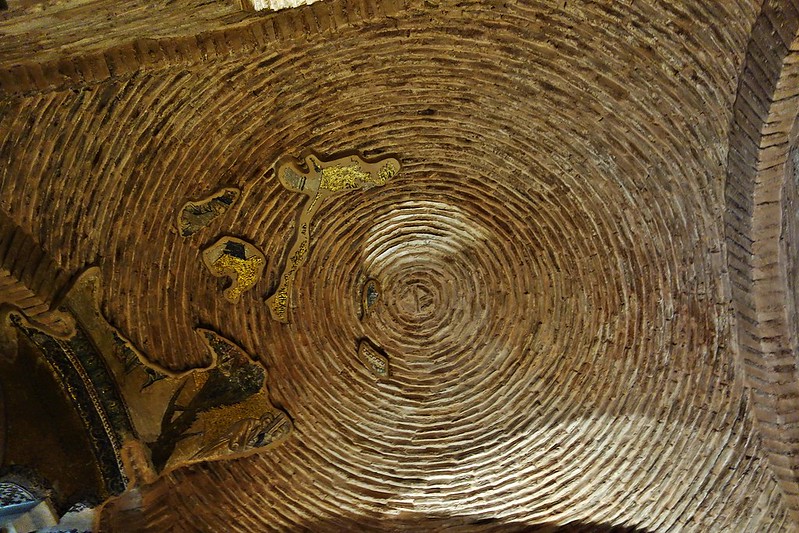
|
|
|
|
Post by bixaorellana on Sept 8, 2015 0:49:38 GMT
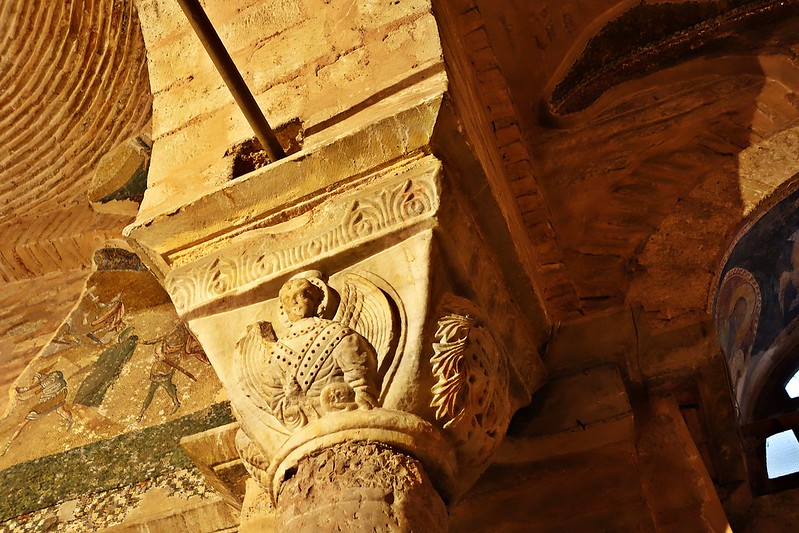 And under this arch into another kind of medieval splendor ~ And under this arch into another kind of medieval splendor ~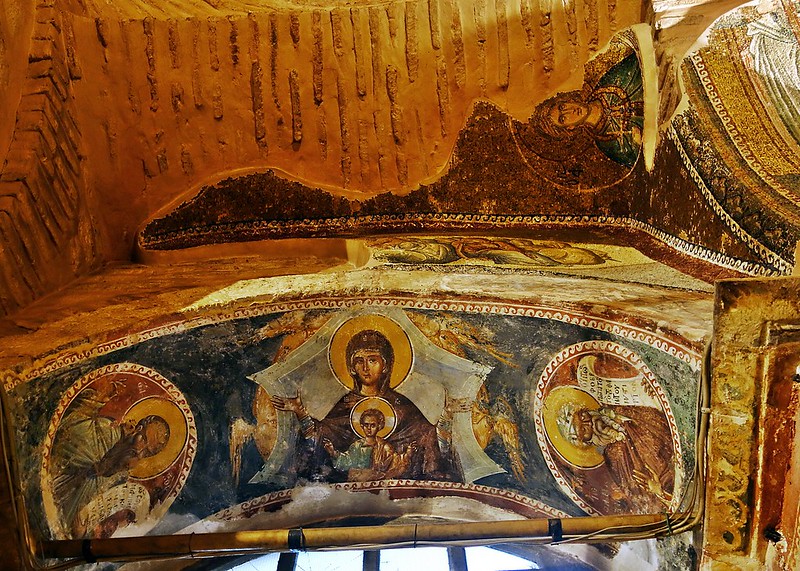  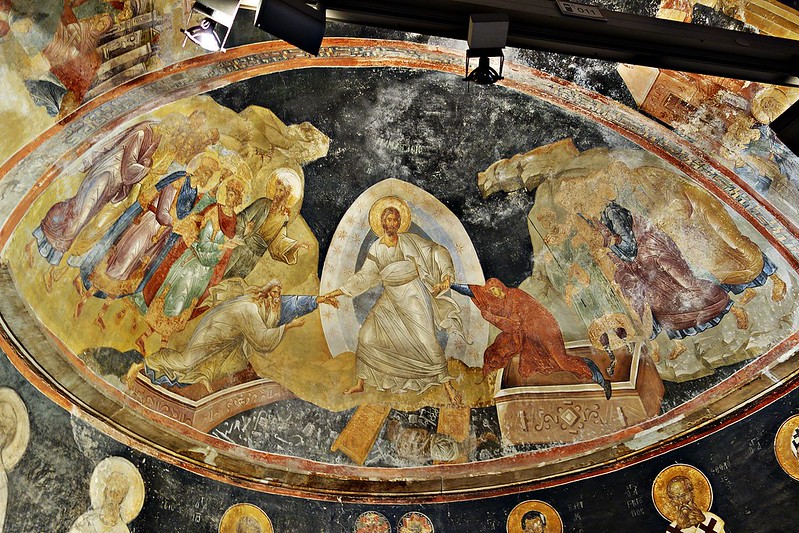 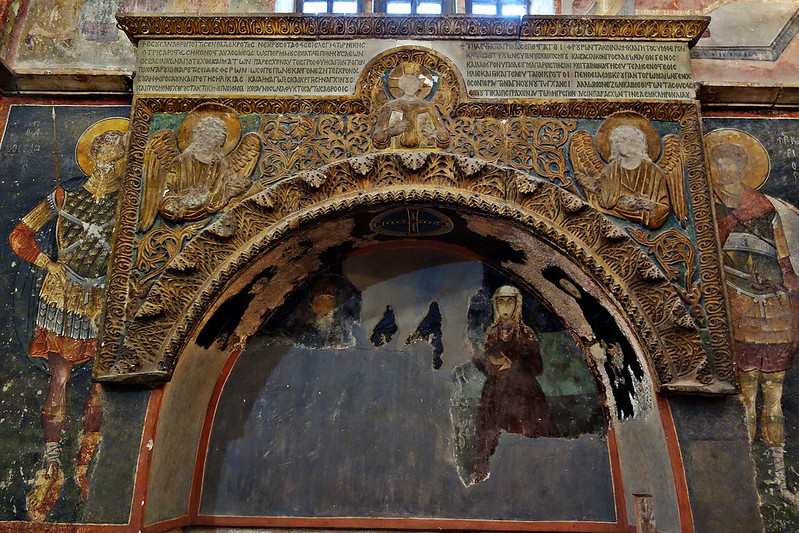 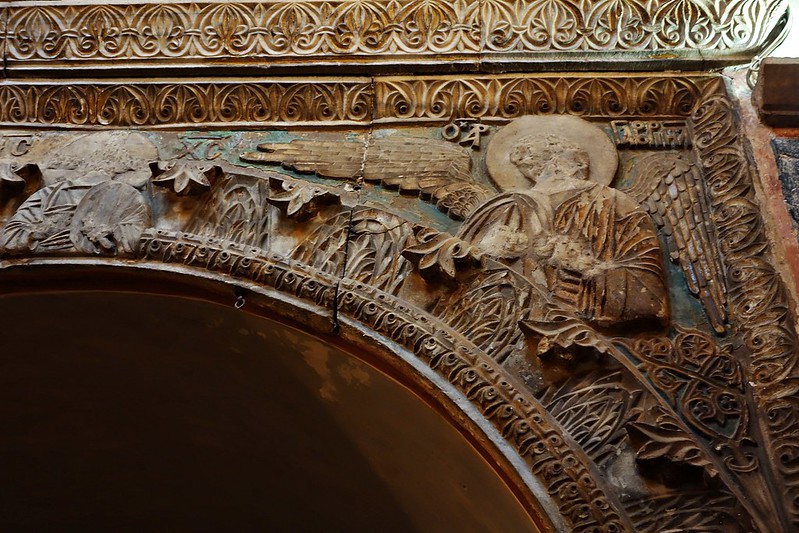 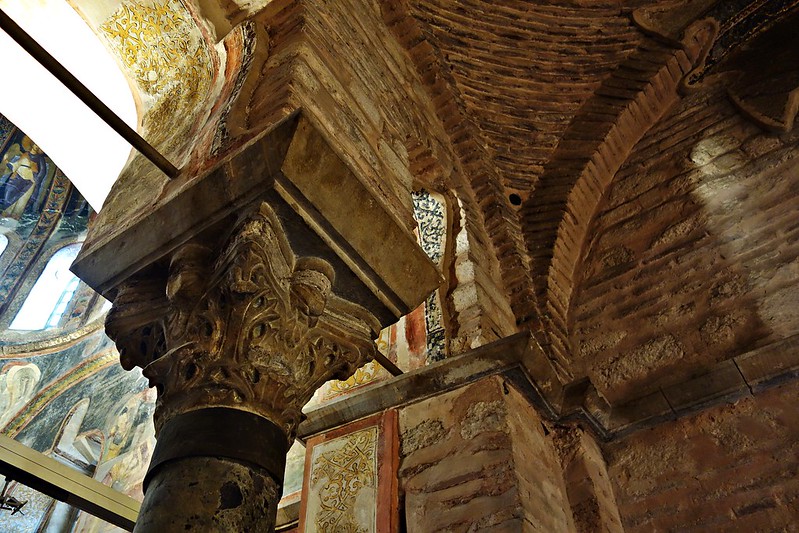 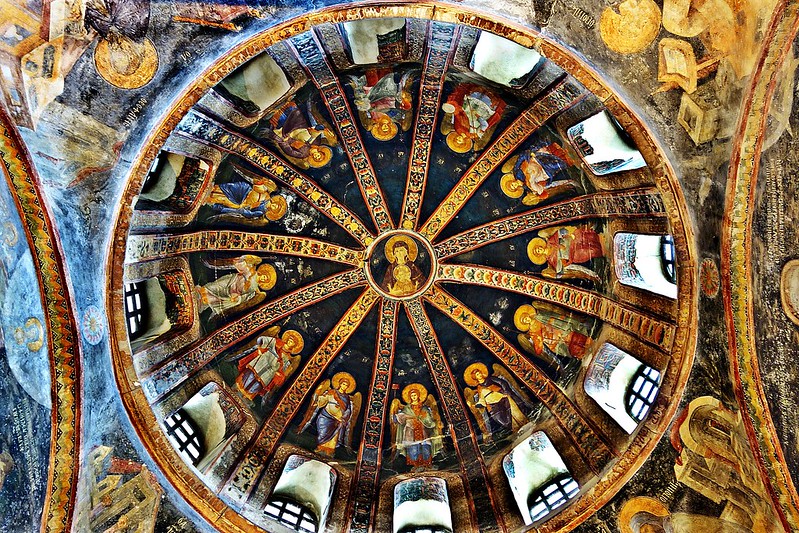 A vision of the cosmos ~ A vision of the cosmos ~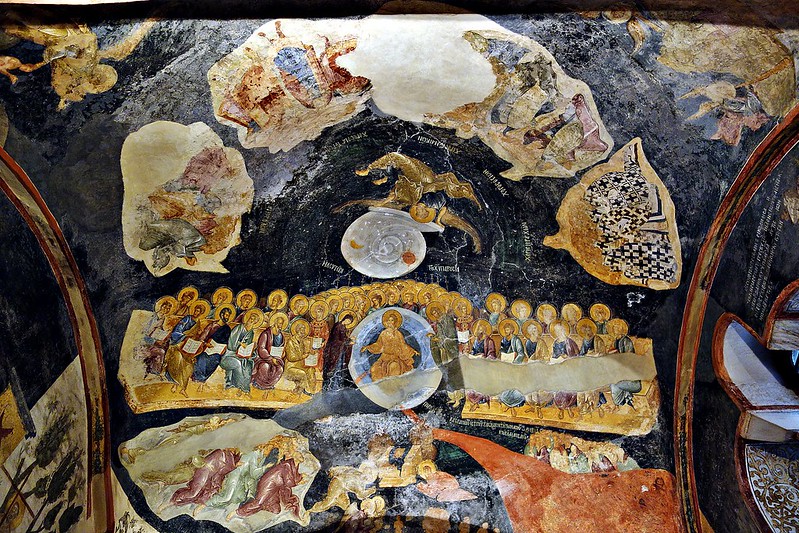 Isn't this marvelous?! Isn't this marvelous?! That's all, folks! That's all, folks! 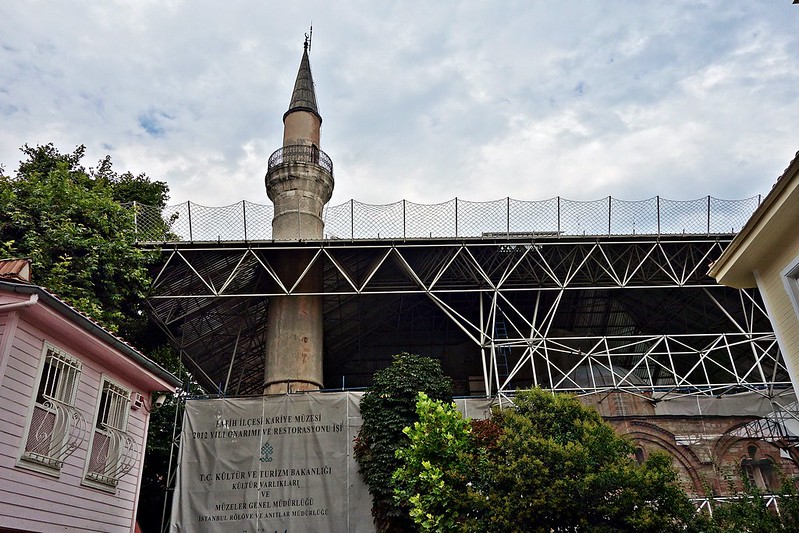 |
|
|
|
Post by nycgirl on Sept 8, 2015 2:07:59 GMT
How beautiful. You really captured a nice golden glow on the mosaics. It looks like the restorations will be long and painstaking, but I imagine it will look so stunning afterward.
Were many other people there during your visit?
|
|
|
|
Post by htmb on Sept 8, 2015 2:47:30 GMT
Glorious! The cleaned up areas look like they've been lovingly restored. Did you have to lie on your back to get those great ceiling shots?  |
|
|
|
Post by questa on Sept 8, 2015 3:08:47 GMT
Just a passing thought...
Muslims are not allowed to portray human or animal forms in their art.
Does this mean that all the restorations are done by non-Muslims in a Muslim country?
|
|
|
|
Post by bixaorellana on Sept 8, 2015 3:43:19 GMT
Thank you, NYCGirl! There weren't all that many people there, maybe because some of the guidebooks/forums make it sound like a big deal to get there, but it was pretty straightforward. Also, the museum is near the ancient city walls and the beautiful Mihrimah Sultan Mosque *, so it was a very nice outing. I think that what I saw is finished restoration, as all the more they could do with that section would be to fake it. It's frustrating but more accurate to see that some of it has just been lost to centuries and simply to treasure what is left. Thank you so much, Htmb. And to answer your question: Yes. With my legs waving in the air.  Questa, that is not altogether true: en.wikipedia.org/wiki/Aniconism*See the Mihrimah Sultan Mosque starting here: anyportinastorm.proboards.com/post/251058/thread(Replies #32, 33, and 34 in the Istanbul, August 2015 thread) |
|
|
|
Post by bjd on Sept 8, 2015 6:30:39 GMT
Perhps I am being cynical, and I haven't looked at the links about the restorations, but I would think that the Turkish government is helping to restore this church because Istanbul is a city that attracts quite a lot of tourists. I say this because I have read a book by William Darlymple about the traces of Christianity in the Middle East and he mentioned that many churches are being converted into mosques or being let go to ruin. From the Holy Mountain |
|
|
|
Post by bixaorellana on Sept 8, 2015 15:50:22 GMT
Tourism is probably a motivating factor is getting continuing funds for museums pretty much anywhere. In the case of Chora Church, the Turkish government declared it a museum in 1945, probably not a great year for Turkish tourism. Intensive restoration followed from 1948 to 1958 during which time the mosaics and frescoes that had been covered during the church's stint as a mosque were uncovered by the Byzantine Institute of America. Side note: The Byzantine Institute is located in the Dumbarton Oaks Research Library and Collection, in Washington, D.C., beautifully covered by Htmb here: anyportinastorm.proboards.com/thread/7165/georgetown-dumbarton-oaks |
|
|
|
Post by Deleted on Sept 12, 2015 5:30:41 GMT
Although I saw all of these photos as they were posted, I just could not think of anything to say about them that wouldn't be completely banal (stunning, amazing, awesome, etc.).
I think that one of the things that makes all of the mosaics so appealing is the fact that they are not in perfect condition. That allows one to appreciate their age and use one's imagination about how it must have looked when it was brand new -- probably TOO colourful, TOO shiny and bright, TOO kitsch... Putting several hundred years of neglect and abuse between then and now allows us to appreciate how it has stood up over the years even with vandalism, earthquakes and new religions taking over. I hope that the renovation deals more with structural consolidation and cleaning rather than replacing any of the mosaics.
All of the gold coloured mosaic tiles really convey a sense of warmth. But it makes me wonder if any real gold was used. I can't think of what else they might have been able to use back then that would look like gold without being gold.
|
|
|
|
Post by bixaorellana on Sept 12, 2015 6:29:29 GMT
Thank you so much, Kerouac. The part we saw was the already renovated part, which is why I think they're leaving it well enough alone & moving on to another section. As far as real gold goes, I think that most gold tesserae were glass cubes backed or overlaid with gold leaf. They must not have stinted on the stuff either. Monreale cathedral outside Palermo has "two acres of mosaic decoration and it's been calculated that something like 2,200 kilograms of gold were used". source Perhaps more amazingly, the teensy tiles had to be set into wet plaster, so the artisans had to figure on applying only enough plaster that they could finish setting mosaic on in one day. The tesserae were not grouted & were sometimes deliberately set at a slight angle, the better to catch the light & sparkle. I did appreciate seeing the naked parts of the church where the ornamentation had fallen off. Those ceilings that look like upside down coiled clay baskets are really something. About the original work being too garish, I imagine that was balanced by the relative darkness of all inside spaces before electric lighting. You can tell in my photos that I was struggling against extreme light & shadow caused by the awful spot lighting. One of the nicest things about visiting Hagia Sophia ( there will be a report  ) ) was that it was mostly natural lighting. Probably what people saw back then was all that gold and color softly lit by whatever light made it through the windows. And the flickering of candles must have made the figures look as though they were alive. There is a 16th century church in a town near Oaxaca that has little blurry mirrors set up where the wall meets the ceiling in its chapel, the better to illuminate the decoration. This makes me think that all churches and palaces and other grand buildings back pre-electric lighting were always trying to address the inherent gloom within. |
|
|
|
Post by bjd on Sept 12, 2015 7:22:57 GMT
Not to mention that very many churches were painted on the inside. Over the centuries they have suffered either from damage or restoration, so few remain, but those that do are really wonderful. I had never thought about the lack of light, but of course that would have completely changed what people saw. Not to wander off topic, but here is a photo (not mine) of a small church in Rabastens, France farm3.static.flickr.com/2483/3895903900_87c50ea8bc.jpg. My sister and I were visiting when a cleaning lady came in and switched on the lights. I remember visiting one of the churches in Ravenna, Italy, when there was a group of tourists at the same time. My friend and I were just looking at the mosaics in natural light, but then the guide told one of the group to put a coin in the lighting box and it completely changed the atmosphere. Of course, you could see everything more clearly, but it did change the atmosphere. |
|
|
|
Post by bixaorellana on Sept 12, 2015 16:10:14 GMT
... it makes me wonder if any real gold was used. I can't think of what else they might have been able to use back then that would look like gold without being gold. I should have mentioned in my previous reply the reason real gold could be & was used: that's because many of these places were commissioned &/or funded by either rulers or those close to them who had become wealthy because of being close to them. And those people weren't shy about announcing themselves either, routinely incorporating their own images in with the heavenly host. In the 7th picture down in the OP, there are donors shown on either side of Mary and Jesus. I don't have a photo of this, but Theodore Metochites, who bankrolled the renovation of Chora Church, had himself immortalized right next to the most important portrait of Jesus in the church. This sort of thing is repeated in all the Byzantine churches as far as I know. Possibly the most arrogant example is that of the church of La Martorana, built by Roger II's admiral & showing Roger actually being crowned by Christ. In a nod to humility, the admiral is shown prostrate before the Virgin, but with his face fully turned toward the viewer like a classic B movie actor. |
|
|
|
Post by questa on Sept 12, 2015 23:31:07 GMT
Nowadays, when the good and the great endow some worthy cause, it is their name(s) that live on, not their faces. Philanthropy as in US is not common here, but I see more and more peoples' names being attached to the charitable organisation they favour. This seems like having their likenesses enter Heaven.
|
|
|
|
Post by lugg on Sept 20, 2015 21:04:24 GMT
So beautiful, of course your photos are so good ( as always) I would love to see Chora for myself one day.
|
|
|
|
Post by bixaorellana on Sept 21, 2015 14:25:08 GMT
What a kind thing to say, Lugg -- thank you! I would definitely return to Chora if I ever have the luck to be back in Istanbul. I still have to make a report on Hagia Sophia *. The pictures are all hosted and ready to go, but there are so many!  That's because there is so much to take in, as indeed there was in every place I visited there. *report on Hagia Sophia here |
|
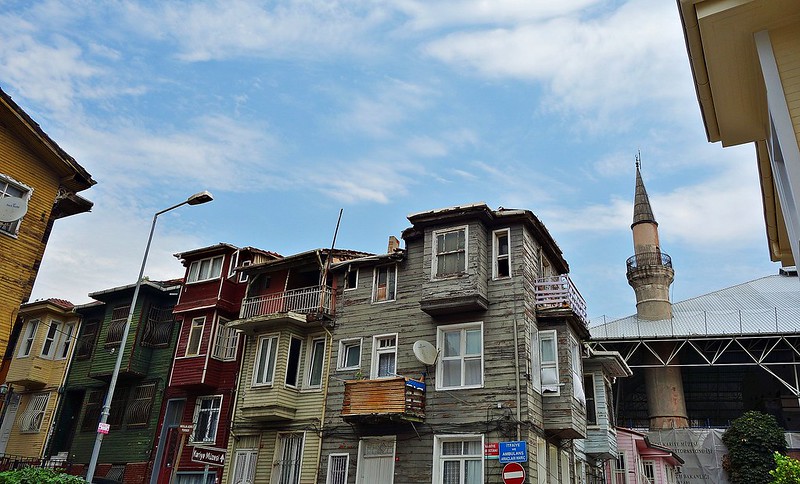
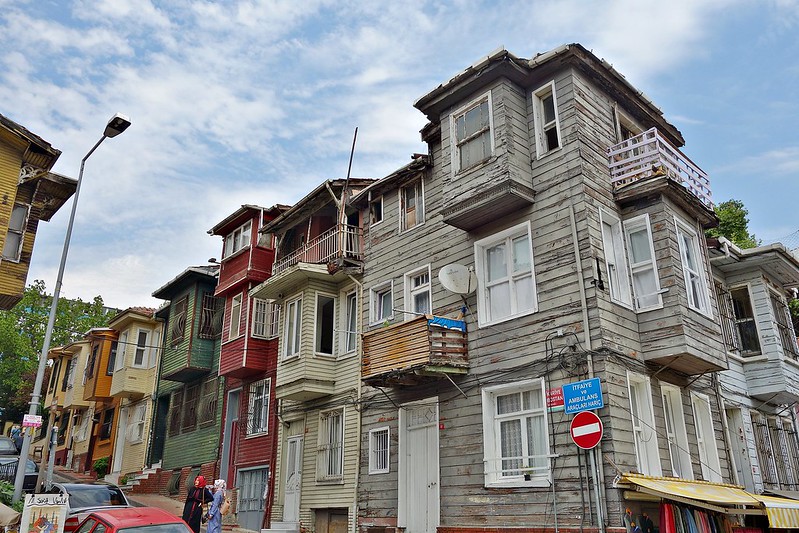
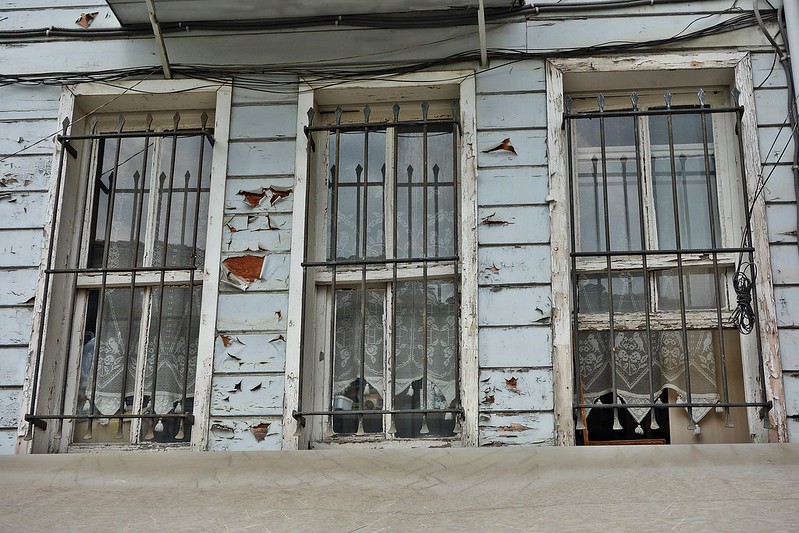
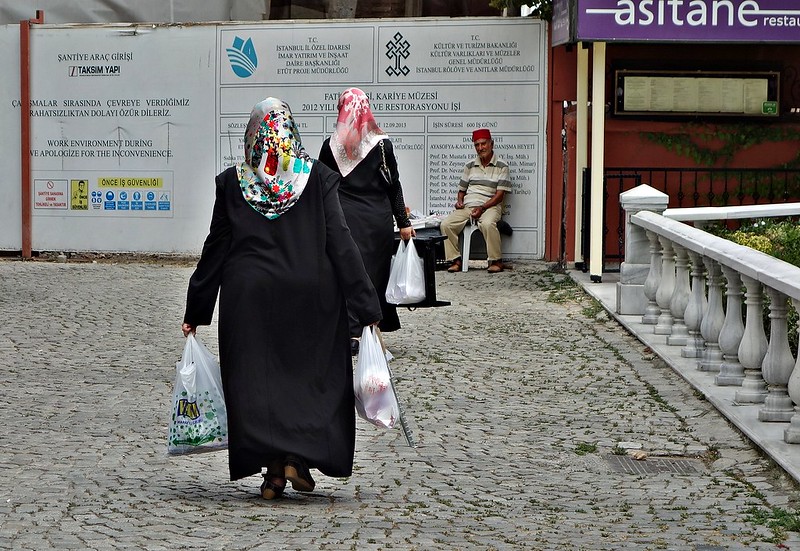
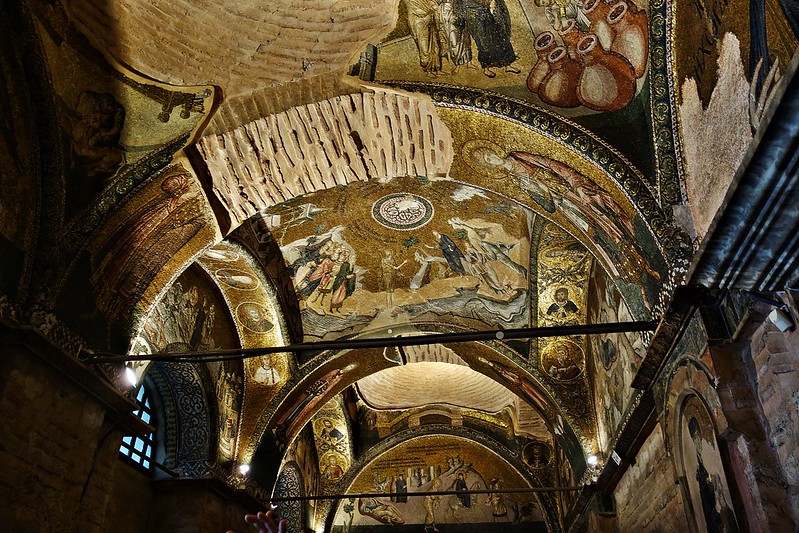
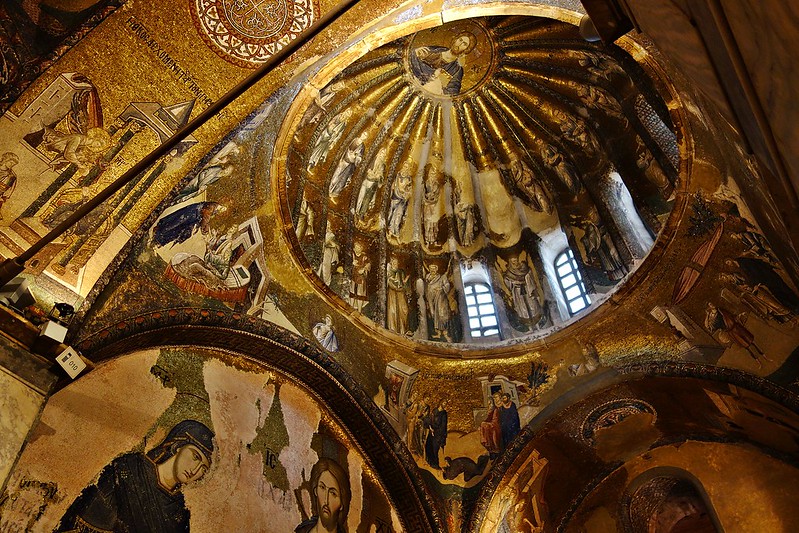
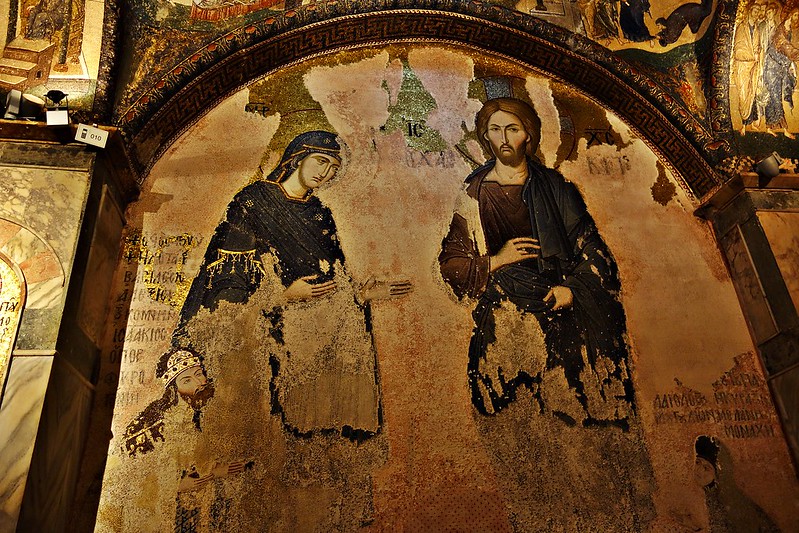

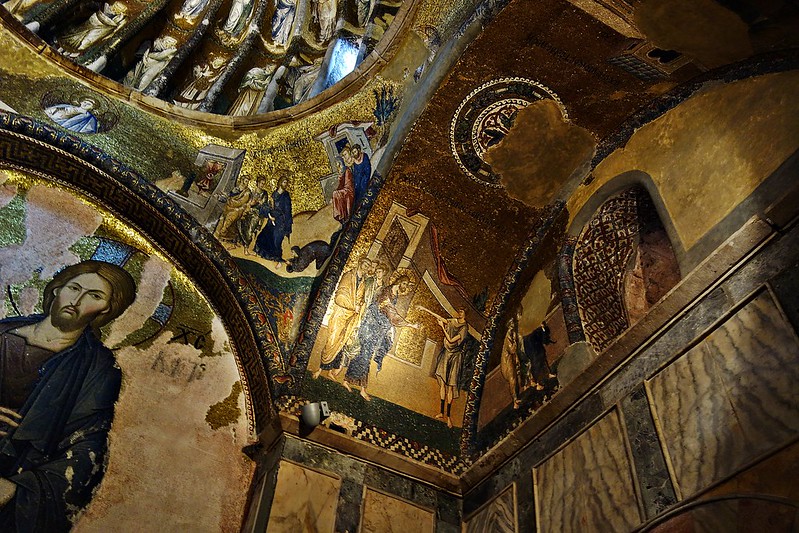
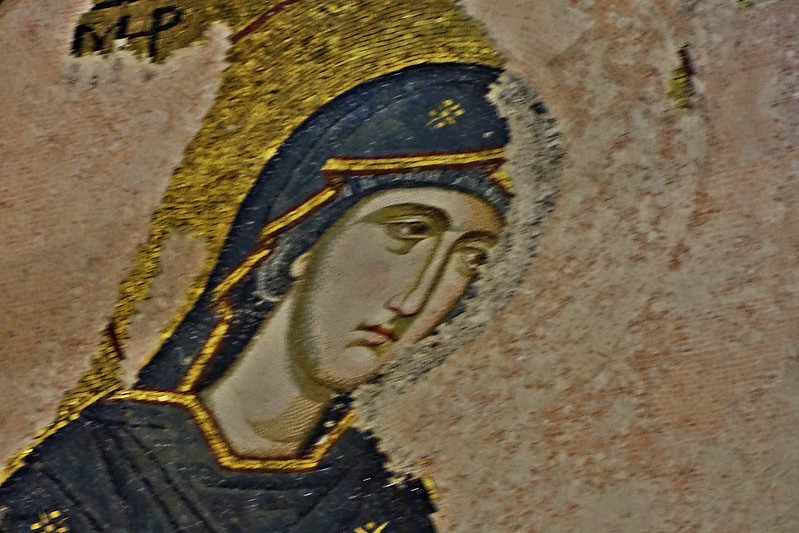
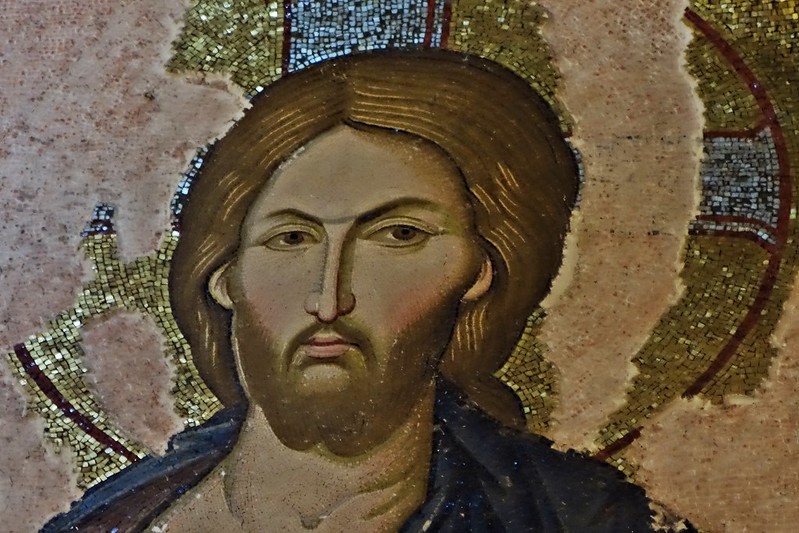

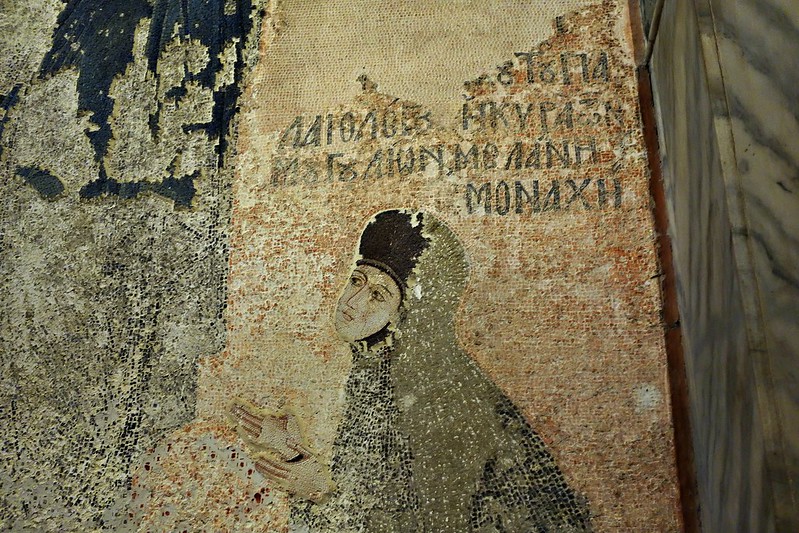
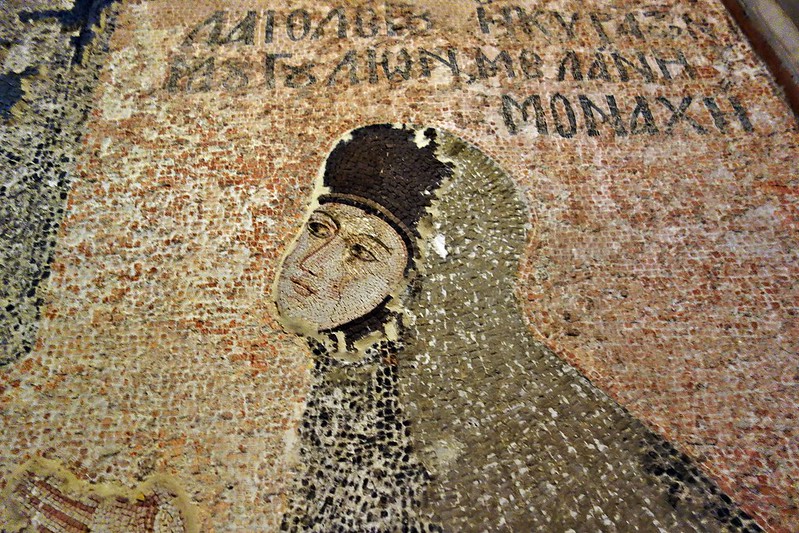































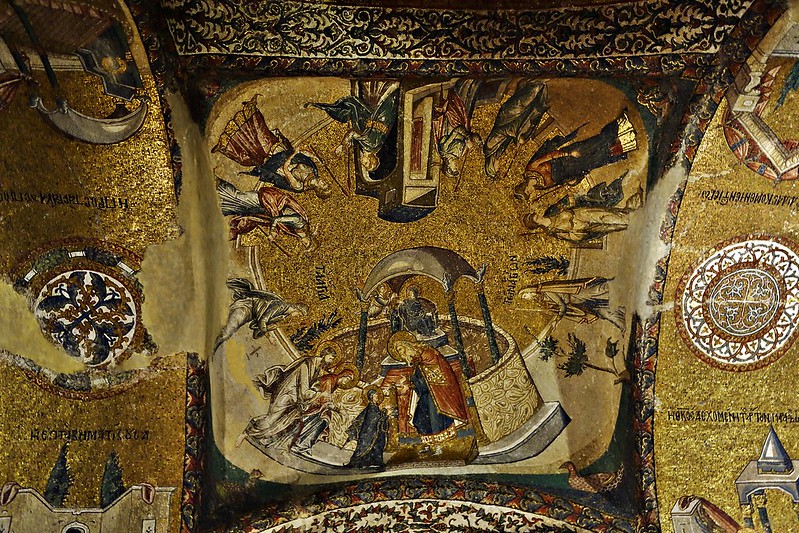
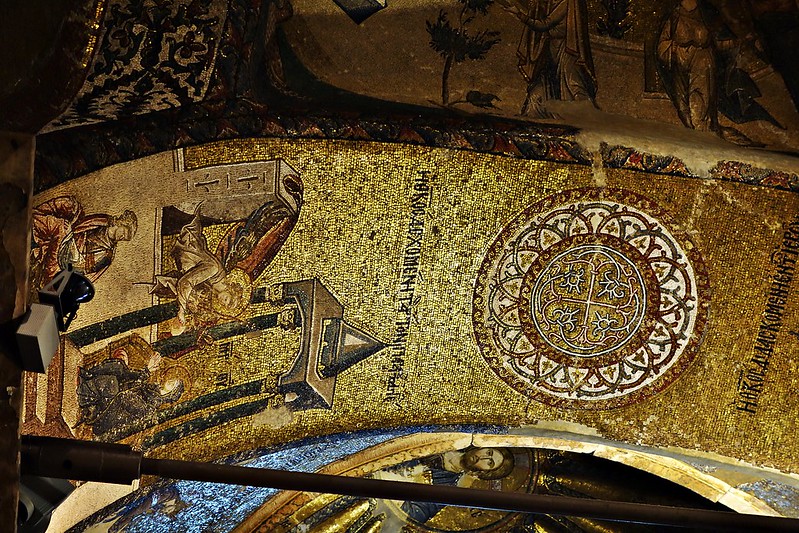
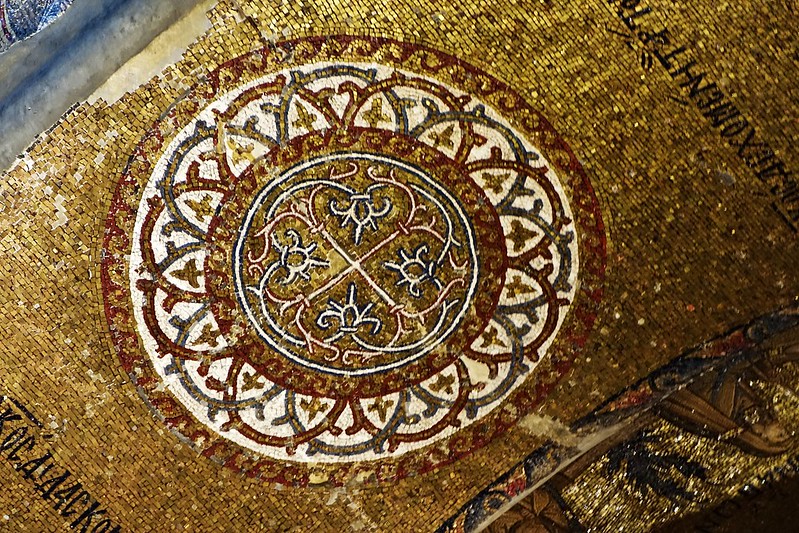
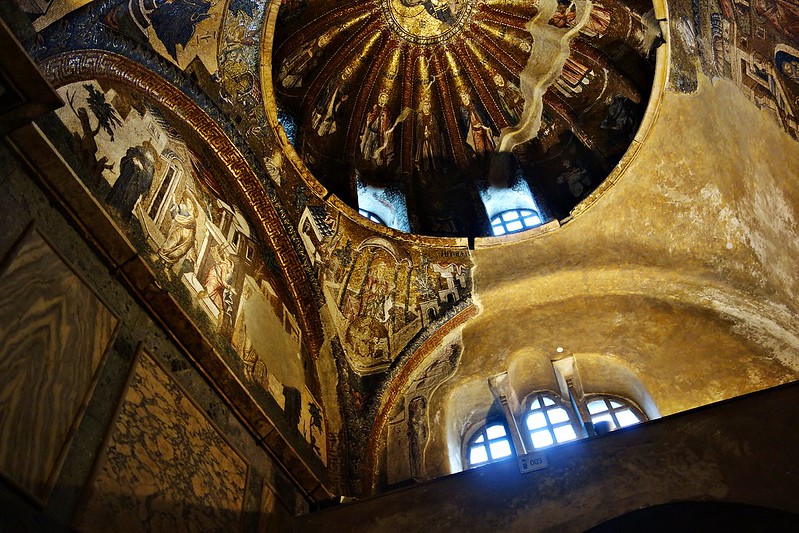
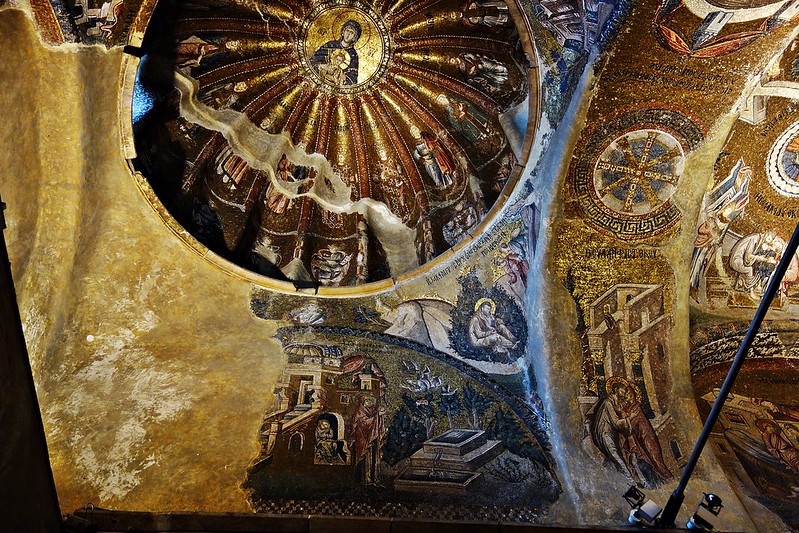
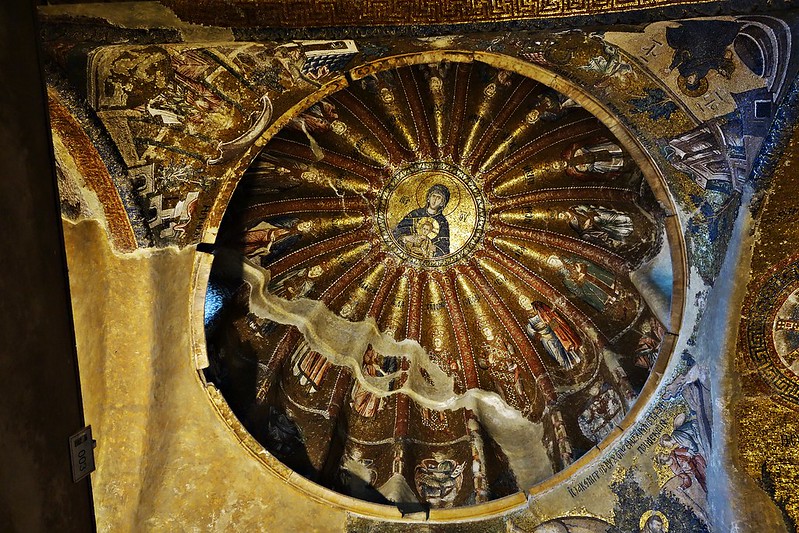
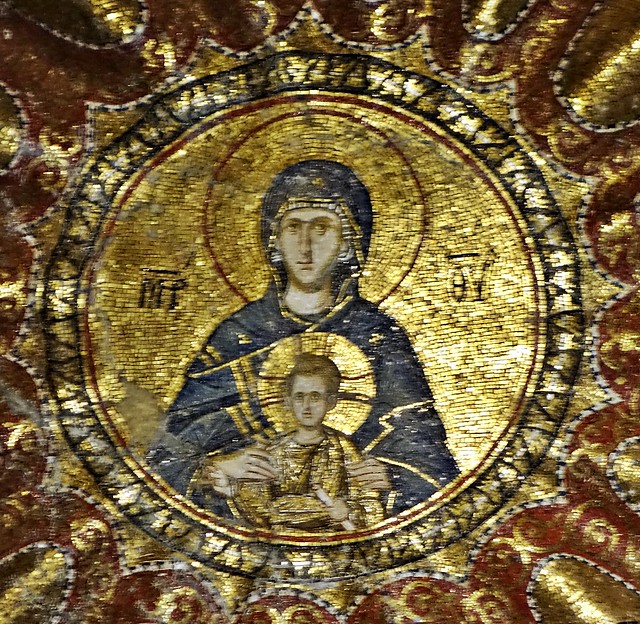
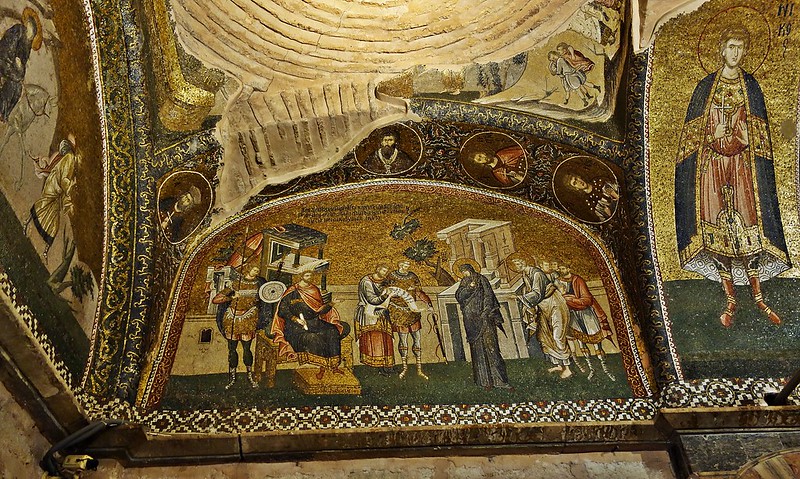
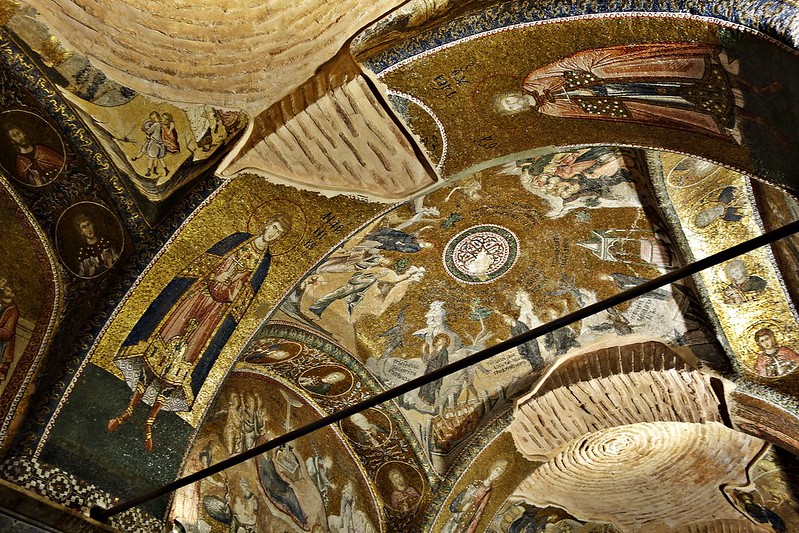
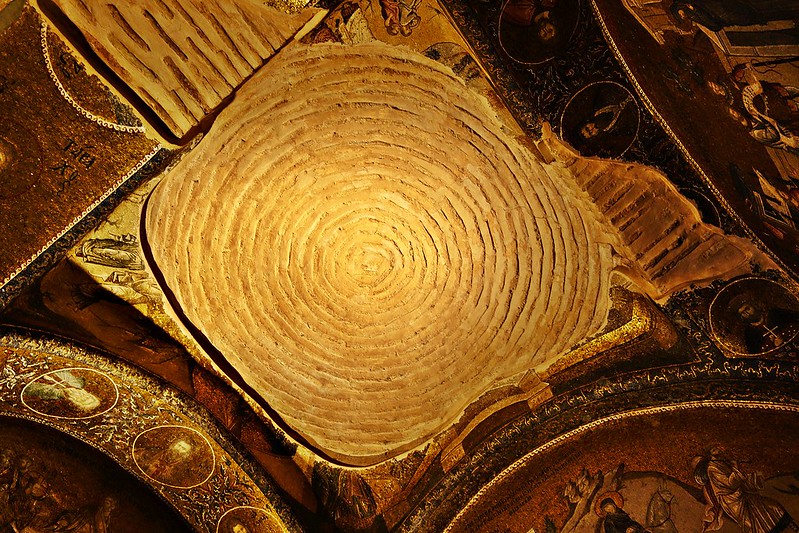

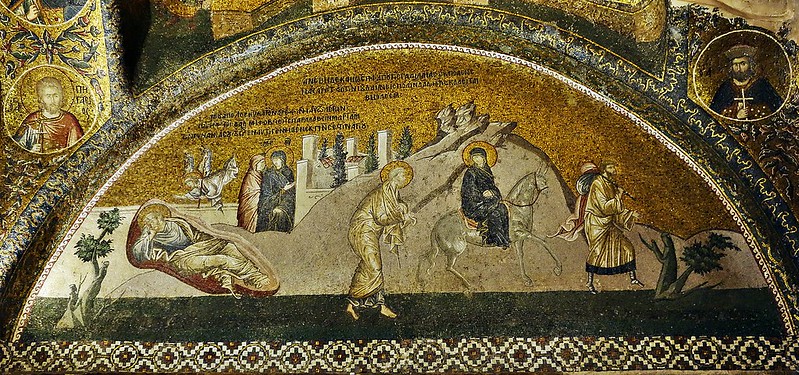

































 ) was that it was mostly natural lighting. Probably what people saw back then was all that gold and color softly lit by whatever light made it through the windows. And the flickering of candles must have made the figures look as though they were alive. There is a 16th century church in a town near Oaxaca that has little blurry mirrors set up where the wall meets the ceiling in its chapel, the better to illuminate the decoration. This makes me think that all churches and palaces and other grand buildings back pre-electric lighting were always trying to address the inherent gloom within.
) was that it was mostly natural lighting. Probably what people saw back then was all that gold and color softly lit by whatever light made it through the windows. And the flickering of candles must have made the figures look as though they were alive. There is a 16th century church in a town near Oaxaca that has little blurry mirrors set up where the wall meets the ceiling in its chapel, the better to illuminate the decoration. This makes me think that all churches and palaces and other grand buildings back pre-electric lighting were always trying to address the inherent gloom within. That's because there is so much to take in, as indeed there was in every place I visited there.
That's because there is so much to take in, as indeed there was in every place I visited there.